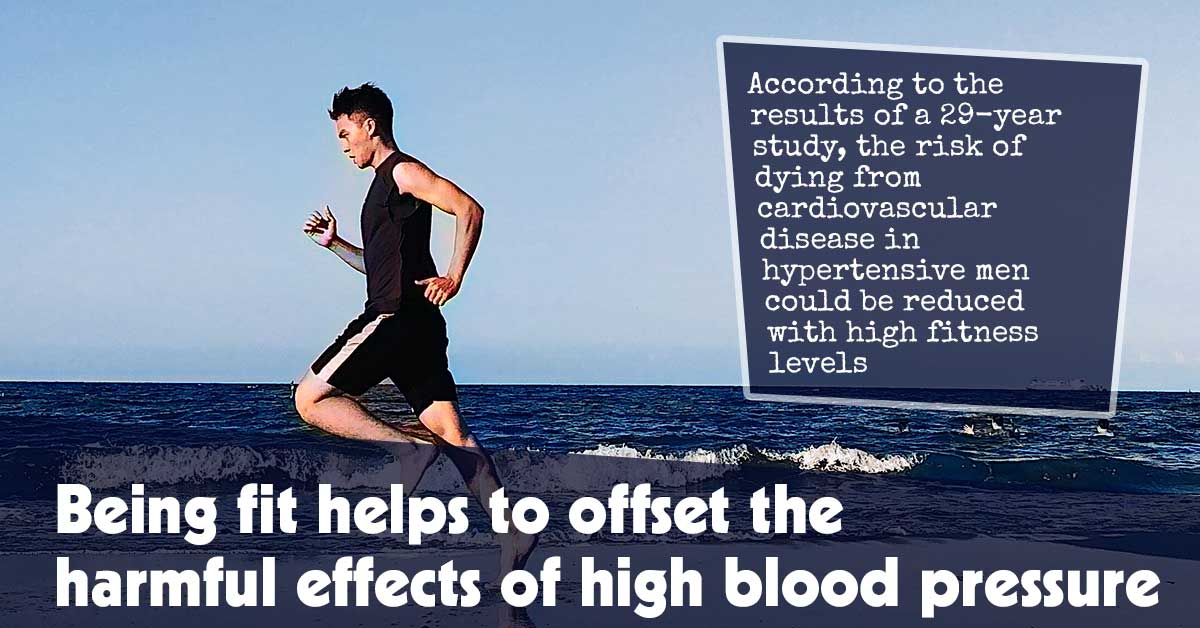According to the results of a 29-year study, the risk of dying from cardiovascular disease in hypertensive men could be reduced with high fitness levels.1✅ JOURNAL REFERENCE
DOI: 10.1093/eurjpc/zwad034
This study evaluated the combined effects of blood pressure and fitness on the risk of death from cardiovascular disease. The results indicate that fitness helps in protecting against some of the negative effects of hypertension.
Almost 1.3 billion individuals globally between the ages of 30 and 79 have hypertension which is a significant risk factor for stroke and heart attack and a major cause of premature death. Prior studies have demonstrated that high cardiorespiratory fitness is associated with greater longevity. The current study looked at the connection between fitness, blood pressure, and risk of cardiovascular disease death.
2,280 men between the ages of 42 and 61 took part in the study. Baseline measurements, which included cardiorespiratory fitness and blood pressure, were carried out between 1984 and 1989. Fitness was categorized as low, medium, or high, and blood pressure was categorized as normal or high. Cardiorespiratory fitness was evaluated as maximal oxygen uptake when the participants rode a stationary bicycle.
The age of the participants at the start of the study was 53 years on average and they were tracked up until 2018. There were 644 deaths as a result of cardiovascular disease during an average follow-up of 29 years. The risk of cardiovascular disease death was analyzed after adjusting for a marker of inflammation known as high sensitivity C-reactive protein, socioeconomic status, physical activity, alcohol consumption, antihypertensive medication usage, coronary heart disease, type 2 diabetes, smoking status, cholesterol levels, BMI, and age.
Considering blood pressure on its own in comparison to normal values, hypertension was linked to a 39% increase in cardiovascular death risk. Considering fitness on its own in comparison to high levels, low fitness was linked to a 74% increase in cardiovascular death risk.
To assess the combined associations of fitness and blood pressure with cardiovascular death risk, individuals were categorized into 4 groups: 1) a comparison reference group with high fitness and normal blood pressure; 2) a low fitness and normal blood pressure group; 3) a high fitness and high blood pressure group; 4) a low fitness and high blood pressure group.
Men who had low fitness and high blood pressure had over double the risk of cardiovascular death in comparison to men with high fitness and normal blood pressure. Men having high blood pressure with high fitness levels had a weaker increase in cardiovascular death risk: it was only 55% higher compared to men with high fitness and normal blood pressure.
Both low fitness levels and high blood pressure were each linked to an increased risk of cardiovascular death. High fitness levels helped reduce, but didn’t eliminate, the elevated cardiovascular death risk in men with high blood pressure.
The inability of cardiorespiratory fitness to eliminate cardiovascular death risk completely in men with high blood pressure could be partly a result of the independent and causal relationship between cardiovascular disease and blood pressure.
The study suggests that hypertensive men should strive to improve their fitness levels by participating in physical activity regularly.



